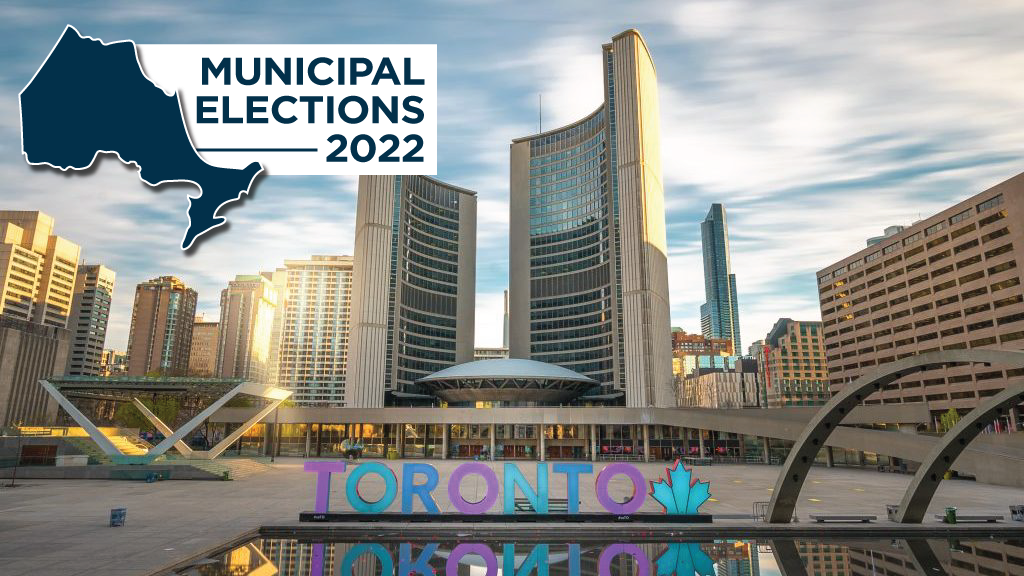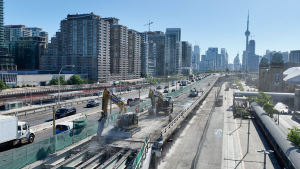With the Ontario municipal election looming on Oct. 24, construction stakeholders are not only seeking investments to build more housing and infrastructure, they are also expressing concern about how projects are going to get built and who is going to build them.
Patrick McManus, executive director of the Ontario Sewer and Watermain Construction Association (OSWCA), said leading up to the election, the association has been speaking with municipal officials about risk management.
“This municipal election is occurring at a critical time for municipal infrastructure,” he explained. “Municipal capital budgets have been increasing over the last two terms of municipal governance to meet ambitious growth targets, but these increases have not come without their share of problems. Contractors across the province are noting that increasingly unmanageable levels of risk are being downloaded into municipal contracts that are resulting in unnecessary cost escalations on projects.”
The cost increases mean less is being built and taxpayers are not getting the best value for their dollars, he added.
“The next term of mayors, councillors and regional chairs will need to address this in a meaningful way by looking for ways to share project risk through indexes, price escalation/de-escalation clauses, better change order/claims management, etc., which will control costs on their projects,” McManus said.
The housing crisis has been a prominent issue in municipal elections and leaders need to do everything possible to ensure cities can address the shortage, said Nadia Todorova, executive director of the Residential and Civil Construction Alliance of Ontario (RCCAO).
“Key things we know will help reduce wait times and costly delays are to speed up the development approvals process and embrace innovative concepts like electronic permitting,” Todorova said.
RCCAO is also interested to see how governance changes with the Strong Mayors powers, which will help get more housing built, particularly in Toronto.
With cities across the province, especially in the Greater Toronto and Hamilton Area (GTHA), expected to see significant population grow over the next five to 10 years, municipalities need ensure continued investment in critical infrastructure to keep up with that growth, Todorova added.
“We need to take an integrated approach to planning through the GTHA and see ongoing collaboration with the province to build additional infrastructure capacity, including critical transportation projects such as Highway 413 and the Bradford Bypass, to create additional mobility in road systems throughout the region,” she pointed out.
The Residential Construction Council of Ontario’s (RESCON) board of directors recently announced it is endorsing Toronto Mayor John Tory for re-election and supports his five-point housing plan.
The mayor is also planning to implement a new development and growth division at the city. Currently responsibilities for housing are divided between different departments that “don’t communicate and play well together,” said RESCON president Richard Lyall.
“The question now is what does that look like, how should it function and how will that institutional design improve things,” said Lyall.
RESCON also has its own 15-point plan which sets out five actions for each level of government to change the development and building approvals process.
“I think the stars are now finally aligned for meaningful change where we can blow out a lot of the silly NIMBYism and the barriers to housing, exclusionary zoning…and we can work on things like innovation,” Lyall told the Daily Commercial News.
While all levels of government are aware of the housing crisis, more action is needed now.
“The bottom line is OK, what’s the plan,” explained Lyall. “If you were to approach this from a business point of view and say ‘we’ve got to build 1.5 million homes in Ontario in the next 10 years,’ well that needs to be broken down into what does that mean for the City of Toronto? For Waterloo Region? What are the exact numbers there? What are the targets and how do we measure success?’”
For Mike Yorke, director of public affairs and innovation with the Carpenters’ District Council of Ontario, it’s important for the industry to partner with municipal governments across the province.
“We want to work with them to ensure we are building safely, sustainability and that our workforce is giving opportunities to all Ontarians,” Yorke stated.
He said investment in infrastructure is “absolutely necessary” as is building more houses.
Yorke said there should also be a focus on addressing the skilled labour shortages by investing in youth, training and creating a more diverse workforce and implementing community benefits agreements.
There needs to be “collaboration with all three levels of government on ensuring that there is a focus on the skilled trades in the immigration numbers of new Canadians which are needed to build the infrastructure and housing we so desperately need,” said Yorke.
The Ontario General Contractors Association (OGCA) is committed to working with municipalities across the province and will focus on further engagement in the coming months, said association president Giovanni Cautillo.
“Our association continues to advocate for fair procurement, clarity in the infrastructure pipeline and collaboration on projects,” he said. “In a time of increased construction costs and shortages in materials and labour, many local infrastructure projects may be at risk and in need of attention.”
Follow the author on Twitter @DCN_Angela.






Recent Comments
comments for this post are closed